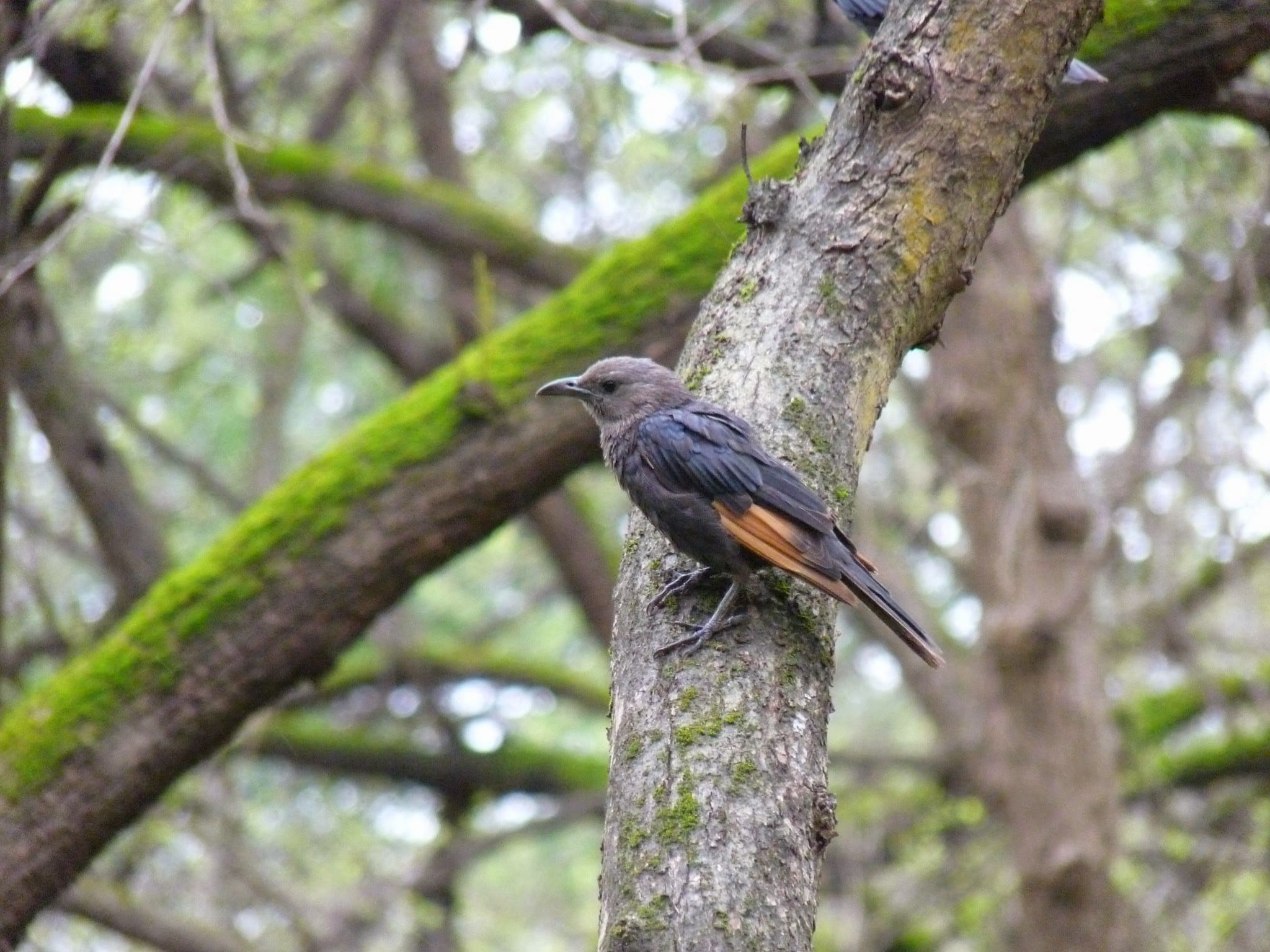
In the fog oases of Salalah, a wolf-whistle bids me turn and look. It isn’t one of the usually sober and dignified Omani gentlemen getting fresh. Just a Tristram’s Starling (Onychognathus tristramii) seeking attention, peering inquisitively from the low, rain-soaked treetops and then hopping to the ground in the eager quest for pickings from so many unfinished picnic lunches. At first glance, the vision of this matte sooty-black bird with rufous-rust wings suggests a black redstart but, then, memory argues that it cannot be so; it is too gregarious and too garrulous — nothing like the quiet dignified demeanour of redstarts and chats — and certainly merits clumping with starlings. Then again, take another look. It doesn’t have the startled, staring golden-white eye of some species of starlings — like the African-native Superb Starling (Lamprotornis superbus), for instance, which has ensconced itself happily in the grounds around Sharjah University further north in the Arabian peninsula in the United Arab Emirates.


I am at Wadi Darbat, a rain-fed watercourse against woolly, drizzle-softened green hills in the Arabian Desert. An oddity and an anomaly. And there’s a geographical reason why this is so. At this time of the year Salalah, in Dhofar Governorate in southeastern Oman, is one of the most visited tourist destinations in the Arab Gulf. Tourists from all over the Gulf come here attracted to the weather. And so do the birds. Every year from June to September, the skies darken and the seas roil. A heavy, moist wind is afoot. It is the khareef, as the Arabs refer to the monsoon. While the rest of the Gulf roasts in temperatures 45 degrees and up, in Salalah it is a temperate 26 degrees, with cool winds, choppy seas and a sprinkle of rain.

While the tourists picnic in the groves beside the wadi, the birds arrive to clean up after them. There are flocks of dark-faced Ruppell’s Weavers (Ploceus galbula) and Spectacled Bulbuls (Pycnonotus xanthopygos) but the Tristram’s Starling is larger than them all, and more visible. If you look at the bird’s distribution map on Birdlife, you’ll see that it has a fairly extensive range from southeastern Oman through Yemen and Saudi Arabia (along the Red Sea coast) and further northwest towards the tip of northeastern Egypt, Israel, Palestinian territories and Jordan to southern Lebanon. Like most mynas and starlings, it is commensal with humans and its range has increased steadily.
Also known as the Tristram’s Red-winged Starling or the Tristram’s Grackle, this bird lives mostly on food and insects, and it clearly augments its diet with any surprises that tourists leave behind.
More birdlife from Oman
Encounter – Rufous-tailed Scrub Robin
Read more ENCOUNTER posts
- TL;DR – Death Stalks Like A Marabou Stork - July 24, 2024
- Dimorphic Egret – Meet this East African mystery bird - June 8, 2024
- Encounter: Northern Treeshrew in Arunachal Pradesh - May 19, 2024


